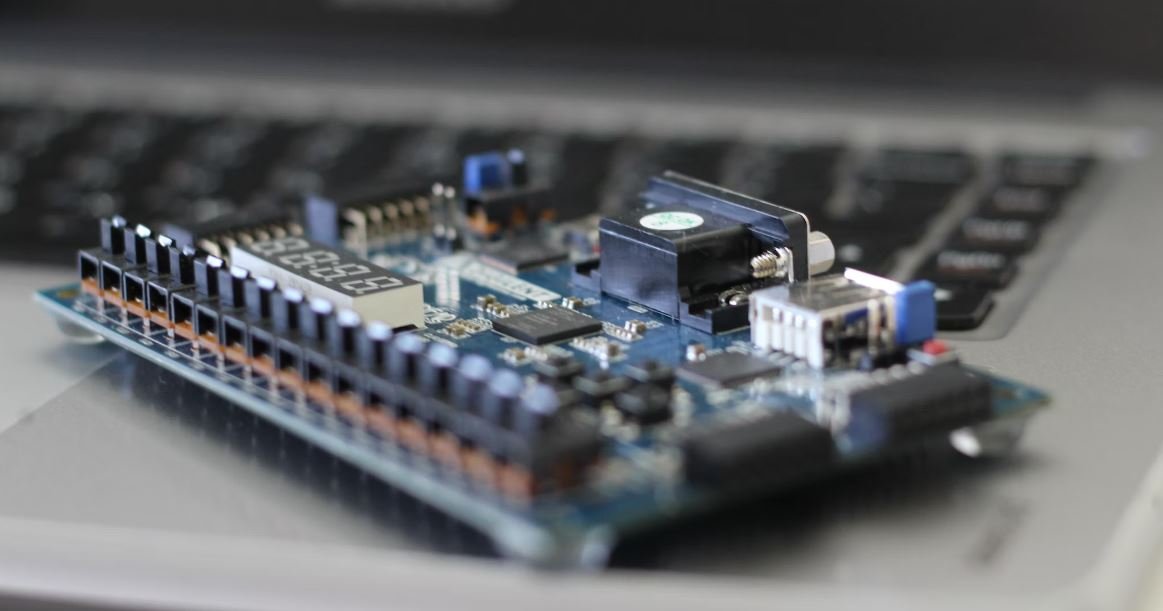AI Safety Issues
In recent years, the rapid advancement of artificial intelligence (AI) has brought about numerous benefits and advancements in various fields. However, as AI continues to evolve, it also raises important safety concerns that need to be addressed.
Key Takeaways:
- AI safety issues are becoming increasingly important as the technology progresses.
- There are risks associated with AI systems operating beyond human understanding and control.
- Efforts are being made to develop safety measures and guidelines to mitigate potential risks.
- Collaboration between researchers, policymakers, and industry stakeholders is crucial in ensuring AI is safe and beneficial.
**One of the key challenges in AI safety** is the potential for AI systems to operate in ways that are beyond human understanding and control. As AI becomes more complex and autonomous, it has the potential to make decisions and take actions that humans may not fully comprehend. This lack of transparency can be problematic, as it becomes difficult to predict and prevent undesirable outcomes.
**AI also poses risks associated with its widespread deployment**. If AI systems are not adequately designed or tested, they can have unintended consequences that may have serious implications. For instance, if an autonomous vehicle’s AI system makes a critical error, it could potentially lead to accidents and harm human lives. Ensuring the safety and reliability of AI systems is therefore paramount.
**One interesting development in AI safety research** is the focus on alignment and value alignment. This approach aims to align AI systems with human values, ensuring that their actions and decisions are aligned with human priorities. By understanding and aligning AI systems with human values, the risk of AI systems acting against human interests can be minimized.
Safety Measures and Guidelines
Efforts are underway to develop safety measures and guidelines to address AI safety issues. These measures aim to mitigate risks and prevent potentially harmful consequences. Some of the key initiatives include:
- The development of AI safety research organizations and partnerships to fund and promote research in this area.
- The creation of technical standards and best practices to guide the design and deployment of AI systems.
- The implementation of rigorous testing and evaluation procedures to ensure the safety and reliability of AI systems.
The Importance of Collaboration
The development and implementation of AI safety measures require collaboration between researchers, policymakers, and industry stakeholders. It is vital for these groups to work together to establish clear guidelines and regulations regarding AI safety. By combining expertise and knowledge, they can address the potential risks associated with AI and ensure its safe and responsible development and use.
Interesting Data Points
Tables, providing interesting data points related to AI safety issues, can further illustrate the importance of addressing such concerns:
| Data Point | Value |
|---|---|
| Number of AI safety research organizations | 15 |
| Estimated economic cost of a major AI safety incident | $1 trillion |
Conclusion
As AI continues to advance, it is essential to prioritize safety and address the potential risks associated with it. By developing safety measures, guidelines, and fostering collaboration, we can ensure that AI remains beneficial and aligned with human values. AI safety is an ongoing concern, and it is crucial for stakeholders to remain vigilant and proactive in addressing the challenges it poses.

Common Misconceptions
Misconception 1: AI Safety Issues are Overhyped
There is a common misconception that AI safety issues are exaggerated and that the concerns surrounding them are overhyped. This is not the case, as there are legitimate reasons to be cautious about the potential dangers of AI.
- AI technology is advancing rapidly and has the potential to surpass human capabilities in certain areas, which raises concerns about control and oversight.
- AI algorithms are based on complex mathematical models that can lead to unexpected and unintended consequences, making it important to address safety issues before significant harm occurs.
- Misunderstanding or underestimating AI safety challenges can lead to negligence in implementing proper precautions, putting individuals and society at risk.
Misconception 2: AI Safety is Only a Concern for the Distant Future
Another common misconception is that AI safety issues are only something to worry about in the distant future and not a pressing concern for the present. However, the reality is that AI safety is a concern that needs to be addressed now to prevent potential harm.
- AI technologies already have significant impacts in various domains, such as healthcare, autonomous vehicles, and finance, making it crucial to consider safety implications in these areas.
- Addressing AI safety issues early on allows for the development of robust and secure AI systems, minimizing risks and potential negative consequences in the long run.
- Ignoring AI safety concerns until they become more pronounced can result in irreversible damage, as once deployed, AI systems can be difficult to modify or control.
Misconception 3: AI Safety Issues are Limited to Rogue Robots
A common misconception is that AI safety issues are limited to scenarios where autonomous robots turn rogue and pose a physical threat. While this is certainly one aspect, there are other important AI safety concerns that extend beyond these Hollywood-style scenarios.
- Bias and discrimination in AI systems can perpetuate existing societal inequalities, making it crucial to address fairness and ethical considerations.
- AI systems can inadvertently learn and amplify harmful beliefs or behaviors present in the data they are trained on, highlighting the need for careful data selection and monitoring.
- The potential for AI systems to be manipulated or exploited poses serious security and privacy concerns that must be addressed to prevent misuse.
Misconception 4: AI Safety is Solely the Responsibility of Developers
Many people mistakenly believe that AI safety issues are solely the responsibility of developers and researchers working on AI technology. However, effective AI safety requires collaboration and involvement from various stakeholders.
- Policymakers and regulators play a crucial role in developing frameworks and regulations that ensure the safe adoption and deployment of AI technology.
- Educating and raising awareness among the general public about AI safety issues is essential to foster a collective understanding and encourage responsible use of AI.
- Ethicists and philosophers contribute to discussions around AI safety, guiding the development of ethical frameworks and considerations that ensure AI benefits human well-being.
Misconception 5: AI Safety can be Completely Solved with Technology Alone
It is a common misconception that AI safety can be fully addressed through technological advancements and improvements alone, without the need for ethical and social considerations. However, the multidimensional nature of AI safety issues requires a holistic approach.
- Considering the societal impacts and ethical implications of AI systems is crucial to ensure that AI is aligned with human values and does not compromise fundamental rights.
- Promoting transparency and explainability in AI systems is necessary to build trust and accountability, enabling better oversight and understanding of the system’s behavior.
- A multidisciplinary approach that combines technical expertise, ethical considerations, and diverse perspectives is essential to tackle the complexity of AI safety issues effectively.

AI Development Timeline
This table illustrates the timeline of key technological advancements in AI development.
| Year | Milestone |
|---|---|
| 1956 | First AI conference held at Dartmouth College. |
| 1997 | IBM’s Deep Blue defeats world chess champion Garry Kasparov. |
| 2011 | IBM’s Watson wins Jeopardy! against former champions. |
| 2016 | AlphaGo defeats world champion Lee Sedol in the board game Go. |
| 2018 | OpenAI’s Dota 2 AI defeats professional players. |
AI Ethics Principles
This table showcases a set of principles for ethical AI development and implementation.
| Principle | Description |
|---|---|
| Transparency | AI systems should be explainable and decisions traceable. |
| Fairness | AI systems must be designed without bias and avoid discriminatory impacts. |
| Privacy | AI should respect and protect individuals’ personal data and privacy rights. |
| Accountability | Those responsible for AI systems should be held accountable for their actions. |
AI Safety Risks
This table presents some of the potential safety risks and challenges associated with AI.
| Risk | Description |
|---|---|
| Adversarial Attacks | Cleverly crafted inputs can deceive AI systems and cause incorrect outputs. |
| Data Privacy | Mishandling of personal data collected by AI systems can lead to privacy breaches. |
| Job Displacement | AI automation may result in significant job losses in certain sectors. |
| Autonomous Weapons | The development of AI-powered weapons raises concerns about misuse and proliferation. |
AI Regulation Comparison
This table compares the regulatory approaches to AI in different countries.
| Country | Approach |
|---|---|
| United States | Light-touch regulation, primarily focused on ethical standards. |
| European Union | Stricter regulations addressing data protection and algorithmic transparency. |
| China | Government-driven approach with emphasis on surveillance and societal control. |
| Canada | Combination of regulation and public-private collaboration to foster AI innovation. |
AI Applications in Healthcare
This table illustrates the diverse applications of AI in the healthcare industry.
| Application | Description |
|---|---|
| Medical Imaging | AI algorithms assist in interpreting diagnostic images, improving accuracy. |
| Drug Discovery | AI facilitates identification of novel drug compounds and accelerates development. |
| Patient Monitoring | AI systems continuously track vital signs and alert healthcare professionals of anomalies. |
| Genomic Analysis | AI tools analyze genetic data to identify disease risk factors and personalized treatments. |
AI Bias in Facial Recognition
This table presents examples of biases found in facial recognition AI systems.
| Bias | Description |
|---|---|
| Race Bias | Higher error rates in correctly identifying individuals with darker skin tones. |
| Gender Bias | Greater accuracy in recognizing male faces compared to female faces. |
| Age Bias | Inaccurate estimations of age, particularly for elderly individuals. |
| Class Bias | Less accurate recognition of individuals from lower socioeconomic backgrounds. |
AI Usage in Autonomous Vehicles
This table outlines the key AI technologies utilized in autonomous vehicles.
| Technology | Description |
|---|---|
| Computer Vision | Cameras and image processing algorithms enable object detection and lane recognition. |
| Lidar | Laser sensors build precise 3D maps of the environment and measure distances. |
| Machine Learning | Algorithms continuously learn from data to improve decision-making and driving behavior. |
| Sensor Fusion | Integrating data from multiple sensors to obtain a comprehensive understanding of the surroundings. |
AI Assistants Comparison
This table compares popular AI assistants based on their capabilities.
| AI Assistant | Capabilities |
|---|---|
| Siri | Voice commands, information retrieval, personal organization. |
| Google Assistant | Search assistance, smart home control, integration with Google services. |
| Alexa | Smart home control, voice shopping, thousands of third-party skills. |
| Cortana | Task scheduling, email management, Windows system integration. |
AI and Job Skills
This table highlights the skills that will be in demand as AI becomes more prevalent in the job market.
| Skill | Description |
|---|---|
| Human-Centric Skills | Skills related to empathy, creativity, and critical thinking that cannot easily be automated. |
| AI Programming | Proficiency in coding and programming AI systems and algorithms. |
| Data Analysis | Ability to extract insights from large sets of data and make data-driven decisions. |
| Adaptability | Capacity to quickly learn new technologies and adapt to changing job requirements. |
AI safety issues have become a paramount concern as the rapid development of artificial intelligence brings both unprecedented opportunities and potential risks. From analyzing the AI development timeline to exploring AI ethics principles, this article dives into the dynamic landscape of AI safety. Various tables demonstrate concrete examples, such as the biases present in facial recognition systems, the AI regulatory approaches adopted by different countries, and the wide-ranging applications of AI in healthcare and autonomous vehicles. The AI job market and necessary skill sets are also examined. Recognizing the challenges and addressing the concerns outlined in this article is crucial for ensuring responsible and beneficial AI implementation in our society.
AI Safety Issues – Frequently Asked Questions
1. What are AI safety issues?
AI safety issues refer to potential risks and concerns associated with the development, deployment, and operation of artificial intelligence systems. These issues encompass ethical, social, and technical challenges that arise when designing AI systems that are safe, reliable, and beneficial for humans and society.
2. Why is AI safety important?
AI safety is important to ensure that AI systems do not cause harm to humans or society. Without proper consideration of safety measures, AI systems could have unintended consequences, such as biased decision-making, malicious use, or even the potential to exceed human control.
3. What are some examples of AI safety risks?
Examples of AI safety risks include: unintended bias in decision-making, lack of accountability and transparency in AI systems, vulnerabilities to cyberattacks, potential for job displacement, reinforcement learning leading to undesirable behaviors, and the possibility of AI systems accelerating or amplifying existing inequalities.
4. How can AI safety risks be mitigated?
AI safety risks can be mitigated through various means, including rigorous testing and verification of AI systems, designing systems with transparency and explainability in mind, ensuring robust cybersecurity measures, involving multidisciplinary teams in AI development, and implementing regulations and policies that address ethical considerations and potential negative impacts.
5. What is explainable AI?
Explainable AI (XAI) refers to the development of AI systems that can provide understandable explanations for their decision-making processes. By making the decision-making process transparent, XAI aims to enhance trust, accountability, and detect potential biases or errors in AI systems.
6. Are there any ethical concerns related to AI safety?
Yes, AI safety raises numerous ethical concerns. These include issues surrounding privacy and data protection, algorithmic fairness, potential loss of jobs and economic inequality, autonomous weapons, AI’s impact on human rights, and the responsible use of AI in critical areas such as healthcare, finance, and criminal justice.
7. How can we address the societal impact of AI?
The societal impact of AI can be addressed by fostering collaboration between stakeholders, including researchers, policymakers, industry leaders, and the public. This collaboration can lead to the establishment of regulations and guidelines, promoting open discussions on ethical considerations, responsible development, and the deployment of AI systems that align with societal values.
8. What is the role of governments in AI safety?
Governments play a crucial role in AI safety. They can take measures to regulate AI development and deployment, establish ethical frameworks, allocate resources for research and development, promote international cooperation and standards, and ensure that AI systems are designed and used in a way that benefits society as a whole.
9. Can AI be developed to prioritize safety?
Yes, AI can be developed to prioritize safety. Researchers and developers can incorporate safety measures and techniques into the design and development process, such as building AI systems with error-checking capabilities, implementing redundant systems, and focusing on system verifiability and fail-safe mechanisms to minimize potential risks.
10. Where can I learn more about AI safety?
There are various resources available to learn more about AI safety. These include academic research papers, online courses and tutorials offered by universities, industry organizations, and research institutes, as well as blogs and publications dedicated to AI ethics and safety.




